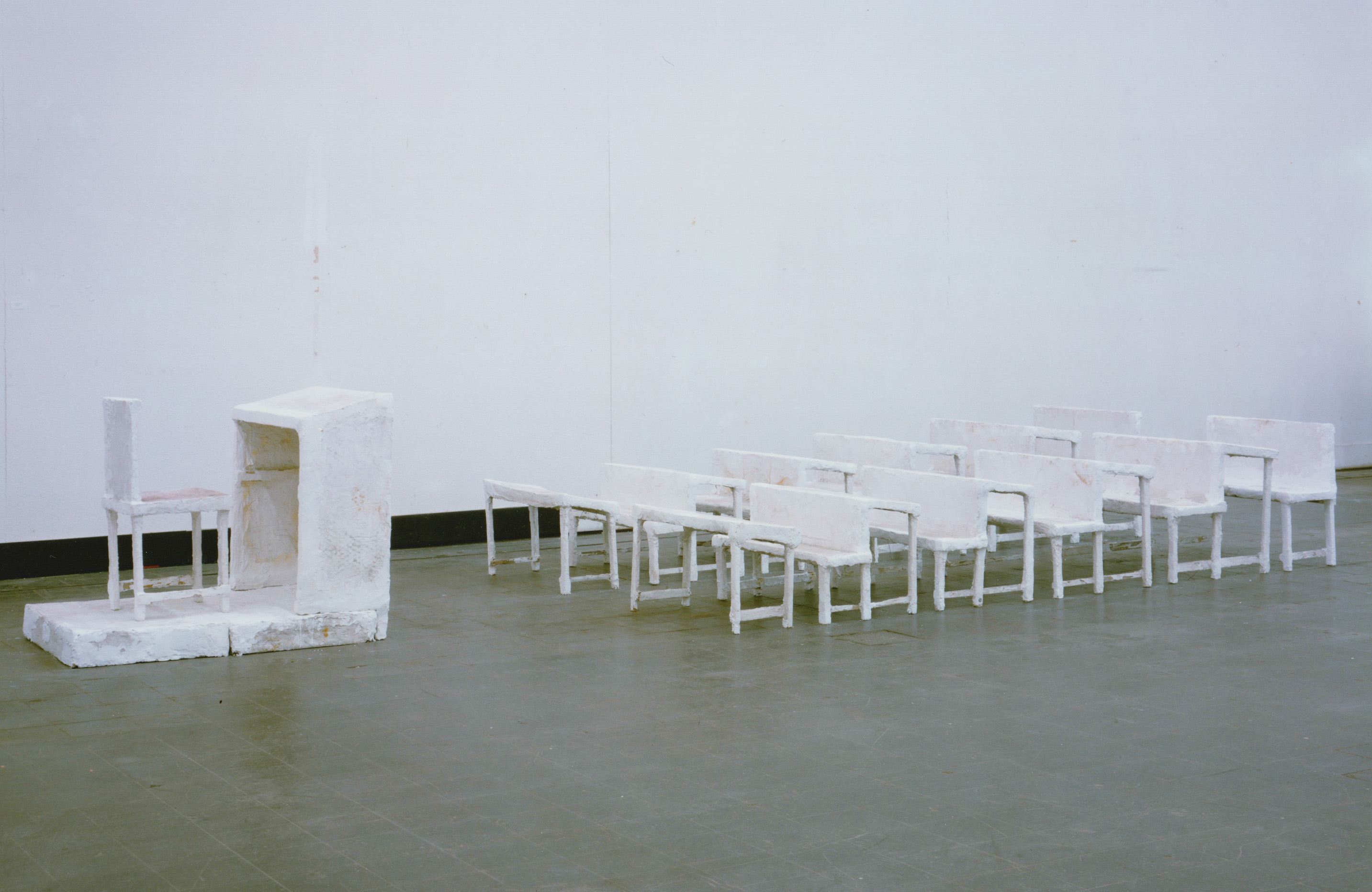Inge Mahn: Schulklasse

Inge Mahn, Schulklasse, 1970
Inge Mahn’s socially minded sculpture is uniquely architectural. Through the intermediary of handmade objects, she creates large-scale installations to illuminate ways of socialization. Working primarily with plaster, her practice engages in a delicate balance among material, structure, and interaction. Often utilizing autobiographical elements, yet driven mainly by an interest in context in which specific human interaction takes place, Mahn’s sculptures often take the recognizable forms of interiors and architecture. The artist’s primary concerns are human relations and the social realm, thus embodying the term “social sculpture,” coined by Joseph Beuys, her teacher and mentor.
Schulklasse (School-class) was first seen at the final exhibition of Beuys’s master student class at Kunstakademie Düsseldorf in 1970. It was then prominently exhibited in the Harald Szeemann–curated documenta 5 in Kassel in 1972, which was Mahn’s first participation in a major exhibition. The work was also her first foray into the form of the classroom, which figures again in her work several times throughout her career. Her primary interest in the form comes from the idea that classrooms are a person’s first introduction to social behaviors outside of the family. As a young artist, this work’s success would encourage her ideas about the social realm that she continues to develop in her multifaceted practice today.
By metonymically representing the interactions between teacher and students and exhibiting chairs that are, in fact, too small to sit in—a decision influenced by the artist’s own size and discomfort in school chairs when growing up—Mahn puts on display physical structures that are informed and influenced by particular subjectivities. In this way, Schulklasse masterfully confronts the relations between everyday objects and contemporary subjects, a concept that would define artistic practices in the decades to come. Her use of plaster further intimates the artist’s hand, a push against the rigidity of Minimal art. The raw surface dialectically imbalances the situation depicted, and while Mahn pushes the context of the artwork into the social, she maintains the nature of sculpture.